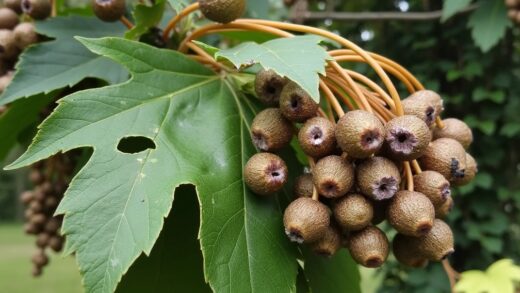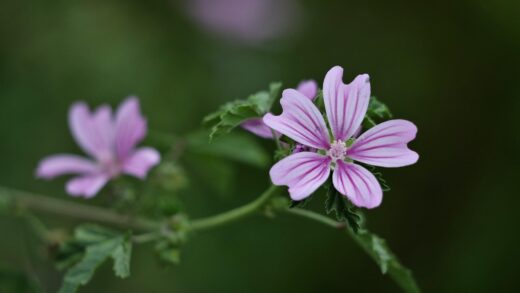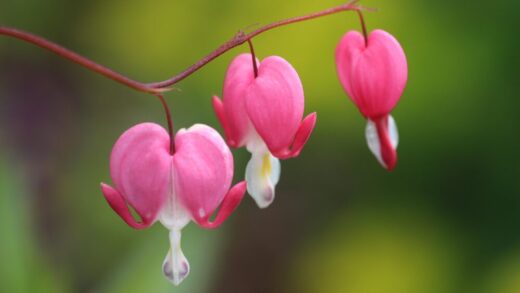Successfully establishing apple-scented mint in your garden begins with a thoughtful approach to planting, a process that lays the critical groundwork for a healthy and productive plant. This variegated herb, with its delightful fruity aroma and attractive foliage, is a vigorous grower, but its initial success is heavily dependent on being placed in the right conditions from the outset. Choosing the correct location, preparing the soil meticulously, and understanding the plant’s inherent growth habits are all fundamental steps. Proper planting not only ensures the mint will thrive but also helps to manage its famously invasive nature, allowing you to enjoy its benefits without it becoming a garden bully. By investing a little time and effort at this initial stage, you set the scene for a long-lasting and rewarding relationship with this wonderful herb.
The first consideration when planting is timing. The ideal time to plant apple-scented mint outdoors is in the spring, after the last threat of frost has passed. This allows the plant to take full advantage of the entire growing season to establish a strong root system before the onset of winter. Planting in the cooler, more stable weather of spring minimizes transplant shock and gives the young plant the best possible start. While it is possible to plant later in the summer, this will require more diligent watering to help the plant cope with the heat and potential drought stress while it is still establishing itself in its new home.
Soil preparation is a non-negotiable step for successful planting. This mint variety prefers a rich, well-draining soil that remains consistently moist. Before planting, it is highly advisable to amend the garden bed with a generous amount of organic matter, such as compost, leaf mold, or well-rotted manure. This will not only provide essential nutrients but, more importantly, it will improve the soil’s structure, enhancing its ability to retain moisture while also allowing excess water to drain away. Digging the organic matter into the top 20-30 centimeters of soil will create a welcoming environment for the plant’s roots to spread and thrive.
The planting process itself is straightforward. Dig a hole that is roughly twice the width of the plant’s current container and just as deep. Gently remove the mint from its pot, being careful not to damage the root ball. If the roots are tightly coiled, a condition known as being root-bound, gently tease them apart with your fingers to encourage them to grow outwards into the new soil. Place the plant in the hole, ensuring that the top of the root ball is level with the surrounding soil surface. Backfill the hole with the prepared soil, firming it gently around the base of the plant to eliminate any large air pockets.
After planting, a thorough watering is absolutely crucial. This initial soaking helps to settle the soil around the roots, ensuring good contact and reducing the risk of transplant shock. For the first few weeks, it is important to keep a close eye on the soil moisture, watering regularly to prevent the young plant from drying out as it adapts to its new environment. This period of establishment is critical, and consistent care during this time will pay dividends in the form of a vigorous, healthy plant for years to come.
More articles on this topic
Choosing the ideal location
Selecting the right spot in your garden is a decision that will have a lasting impact on the health and appearance of your apple-scented mint. The plant has specific light requirements that need to be met for it to flourish. It performs best in a location that receives full sun in the morning, followed by partial shade during the hottest part of the afternoon. This combination provides enough light for vigorous growth and the development of its characteristic essential oils, while the afternoon shade protects the delicate variegated leaves from being scorched by the intense sun. An east-facing aspect is often perfect for this purpose.
Beyond light, consider the plant’s neighbors and its own vigorous growth habit. Mint is notorious for its ability to spread rapidly via underground runners, or rhizomes. If planted in an open garden bed with other perennials, it can quickly become invasive, choking out less aggressive plants. Therefore, it is wise to choose a location where its spread can be naturally contained, such as a bed enclosed by a pathway or wall. Alternatively, proactive containment measures should be part of the planting plan from the very beginning.
Container planting is an excellent and highly recommended option for apple-scented mint. Growing it in a pot completely negates its invasive potential, giving you full control over its location and size. A large container, at least 30-40 centimeters in diameter, will provide adequate space for the roots to grow for a season. This method also allows you to easily move the plant to find the perfect microclimate in your garden or to bring it to a more sheltered spot during the winter months if you live in a particularly cold climate.
Finally, think about accessibility for harvesting. Apple-scented mint is a culinary herb, and you will likely want to snip its leaves regularly for use in the kitchen. Planting it near the kitchen door, along a frequently used path, or in a dedicated herb garden makes harvesting convenient. This not only ensures you make the most of its culinary potential but also means the plant is more likely to receive the regular trimming that helps to keep it compact and bushy. A well-chosen, convenient location benefits both the plant and the gardener.
More articles on this topic
Propagation through division
One of the easiest and most reliable methods for propagating apple-scented mint is through division. This process is best carried out in the spring, just as new growth is emerging, or in the autumn after the plant has finished its most active growth phase. Division not only provides you with new plants to expand your garden or share with friends but also helps to rejuvenate an older, overcrowded clump, ensuring its continued vigor. An established mint plant can become woody and less productive in the center over time, and division effectively resets its growth cycle.
The process of dividing the plant is simple and requires only a few basic tools, such as a garden fork or a sharp spade. Begin by carefully digging up the entire clump of mint, taking care to get as much of the root ball as possible. Once the plant is out of the ground, you can gently shake off the excess soil to get a better view of the root structure. You will likely see a dense mat of roots and rhizomes, which are the horizontal underground stems from which new shoots grow.
Using your hands, a sharp knife, or the edge of your spade, divide the root ball into several smaller sections. Each section should have a healthy portion of roots and at least a few shoots or buds on it to ensure it can grow into a new, independent plant. There is no strict rule on the size of the divisions; even a small piece with a single stem and some roots attached has a very high chance of successfully establishing itself. This resilience is a hallmark of the mint family.
Once you have your divisions, they should be replanted as soon as possible to prevent the roots from drying out. Plant them in a prepared location or in pots at the same depth they were previously growing. Water them in thoroughly to settle the soil and provide the necessary moisture for recovery. The newly divided plants will establish themselves quickly, and you can expect to see new growth within a couple of weeks, providing a testament to the remarkable regenerative capabilities of this versatile herb.
Propagation from cuttings
Propagating apple-scented mint from cuttings is another incredibly simple and effective way to create new plants. This method is particularly useful during the growing season when you are regularly trimming your plant to keep it in shape. It allows you to turn those pruned stems into a whole new batch of mint. The best time to take cuttings is from late spring to mid-summer, when the plant is actively growing, and the stems are healthy and vigorous. This ensures the cuttings have the energy reserves needed to develop a new root system.
To take a cutting, select a healthy, non-flowering stem and snip off a piece that is about 10-15 centimeters long. Make your cut just below a leaf node, which is the point on the stem where a leaf emerges. These nodes contain a high concentration of undifferentiated cells that can readily develop into new roots. Once you have your cutting, gently strip off the leaves from the lower half of the stem, leaving just two or three pairs of leaves at the top. This prevents the lower leaves from rotting when submerged and reduces water loss through transpiration.
There are two primary methods for rooting the cuttings: in water or directly in soil. For the water method, simply place the prepared stem in a jar or glass of water, ensuring the stripped nodes are submerged but the upper leaves remain above the water line. Place the jar in a bright location, but out of direct sunlight. You should see small white roots begin to emerge from the nodes within a week or two. Once the roots are a few centimeters long, the cutting is ready to be potted up in soil.
Alternatively, you can root the cuttings directly in a pot filled with a moist, well-draining potting mix. After preparing the cutting as described before, you can dip the bottom end in a rooting hormone to speed up the process, although this is not strictly necessary for mint, which roots very readily. Make a small hole in the potting mix with a pencil or your finger, insert the cutting, and firm the mix gently around it. Keep the soil consistently moist, and to create a humid environment that encourages rooting, you can cover the pot with a clear plastic bag. After a few weeks, a gentle tug on the cutting will tell you if roots have formed.
Starting from seed
While propagating from cuttings or division is far more common and reliable for apple-scented mint, it is also possible to grow it from seed. However, it is important to be aware of a significant caveat when using this method. As Mentha suaveolens ‘Variegata’ is a specific cultivar, the seeds it produces may not grow true to type. This means the resulting plants might not exhibit the same characteristic variegation or the distinct fruity aroma of the parent plant. They may revert to the plain green form of Mentha suaveolens, which is still a pleasant herb but may not be what you were hoping for.
If you decide to proceed with growing from seed, the process should begin indoors about 8-10 weeks before the last expected frost date in your area. This early start gives the seedlings plenty of time to grow into sturdy young plants before they are ready to be transplanted outside. Use a seed tray or small pots filled with a fine, sterile seed-starting mix. This type of mix is designed to be lightweight and to provide good drainage, which is crucial for preventing diseases like damping-off that can affect young seedlings.
Sow the mint seeds on the surface of the soil and press them down gently; they are very small and require light to germinate, so they should not be covered with much, if any, soil. A very light dusting of vermiculite or fine soil is all that is needed. After sowing, moisten the soil carefully using a fine mist sprayer to avoid dislodging the seeds. To maintain the necessary humidity for germination, you can cover the seed tray with a clear plastic dome or a piece of plastic wrap.
Place the tray in a warm, bright location, but not in direct sunlight, which can overheat the soil. Germination can be erratic and may take anywhere from 10 to 21 days. Once the seedlings have emerged and developed their first set of true leaves, you can remove the plastic cover. When they are large enough to handle, they can be carefully transplanted into individual pots to grow on. They should only be moved outdoors into the garden once all danger of frost has passed and they have been properly hardened off by gradually acclimatizing them to outdoor conditions over a week or two.


















